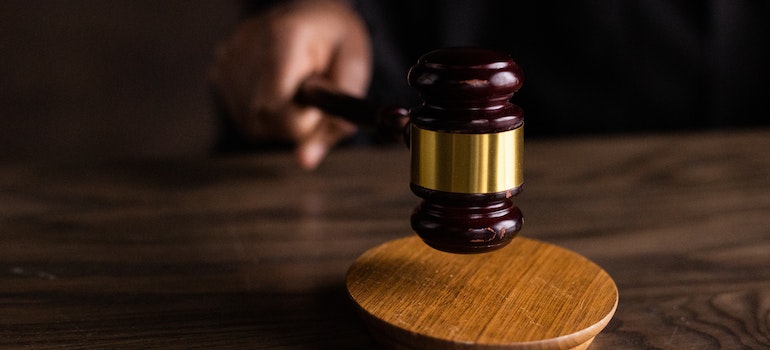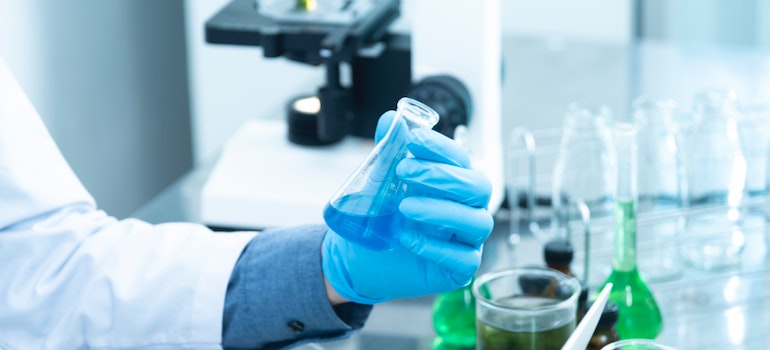What Is Microdosing? Effects & Dangers
So, what is microdosing? In essence, it’s the practice of taking minuscule amounts of psychoactive substances, often less than a tenth of a ‘recreational’ dose. Originating from Silicon Valley’s innovative milieu, microdosing has since permeated global consciousness. Its purported benefits range from enhanced creativity to reduced anxiety, making it a topic of considerable interest for many. In this comprehensive guide from Little Creek Recovery, we aim to delve into the crux of this phenomenon, shedding light on its workings, benefits, potential effects, and risks and dangers. We’ll also touch on the latest research and scientific evidence, factors to consider before trying it out, and common techniques and protocols. Our goal is to equip you with a thorough understanding and provide a well-rounded view to help you make an informed decision about its use. Let’s start our journey to answer the question: “What is microdosing?”.
Jump to Section
How Does Microdosing Work?
Microdosing operates on the principle that small doses of certain psychoactive substances can produce subtle effects that may enhance cognitive abilities, mood, and overall well-being. While the exact mechanisms of action are not fully understood, several theories exist to explain how it works.
Neuroplasticity
One hypothesis suggests that microdosing promotes neuroplasticity, the brain’s ability to reorganize and form new neural connections. It is believed that microdoses of substances like LSD or psilocybin may stimulate neurogenesis, the growth of new neurons, leading to enhanced cognitive function and creativity.
Serotonin Receptors
Another proposed mechanism revolves around activating serotonin receptors in the brain. Substances such as psilocybin and LSD interact with serotonin receptors, crucial in mood regulation and cognitive processes. Microdosing may elicit subtle mood enhancements and heightened focus by modulating serotonin activity.
Modulation of Brain Networks
Microdosing may also influence the functional connectivity of brain networks. Studies have suggested that it can alter the default mode network (DMN), which is responsible for mind-wandering and self-referential thoughts. By quieting the DMN and enhancing communication between different brain regions, it may facilitate creative problem-solving and increase cognitive flexibility.
It’s important to note that the effects can vary depending on the individual, the substance used, and the dosage. As with any psychoactive substance, the interactions with brain chemistry are complex and multifaceted. Understanding the precise mechanisms of this practice is an ongoing area of scientific research.

Benefits of Microdosing
Microdosing has garnered attention due to its potential benefits across various aspects of well-being. While anecdotal reports have been abundant, as experts at Binghamton rehab center note, recent scientific studies are beginning to shed light on the potential positive effects of this practice. Here are some key benefits associated with microdosing:
Enhanced Creativity
Many individuals who understand what is microdosing and start using it report heightened creativity and improved problem-solving abilities. The subtle effects of microdosing may help individuals think outside the box, generate novel ideas, and approach tasks from different perspectives. That can be particularly beneficial for artists, writers, and professionals in creative fields.
Mood Enhancement
Microdosing has been linked to mood improvement and increased emotional well-being. Some individuals report experiencing reduced symptoms of depression, anxiety, and stress. The serotonin modulation effects of substances like psilocybin may contribute to these mood-enhancing properties.
Increased Focus and Productivity
Microdosing is often associated with improved concentration and productivity. Users report enhanced mental clarity and the ability to sustain attention on tasks for longer. That may benefit individuals seeking to boost their work performance or improve their study habits.
Mindfulness and Self-Awareness
Microdosing can potentially facilitate introspection and self-reflection. It may promote a heightened sense of mindfulness, enabling individuals to observe their thoughts and emotions more clearly. This increased self-awareness can aid personal growth, emotional regulation, and healthier coping mechanisms.

Improved Energy and Motivation
Some individuals who microdose describe an increase in energy levels and motivation. It can provide a gentle boost to combat feelings of lethargy or lack of motivation, making it easier to engage in daily activities and pursue personal goals.
It’s important to remember that the benefits experienced from microdosing can vary between individuals. Factors such as individual physiology, mindset, and environmental context can influence the outcomes. Additionally, the benefits should be considered alongside potential risks and individual circumstances. If you or someone you know is considering microdosing or struggling with substance use issues, seek professional guidance from a reputable Scranton drug rehab center is strongly advised.
Potential Effects of Microdosing
Microdosing can lead to various effects, although they tend to be subtle compared to full doses of the substances involved. It’s important to note that individual experiences may vary, and the effects may depend on the specific substance used. Here are some potential effects that individuals may experience through microdosing:
Altered Perception and Sensory Enhancement
Microdosing may heighten sensory perception, intensify colors, enhance music appreciation, and increase texture sensitivity. Some individuals report a shift in perception, describing a greater connectedness to their surroundings.
Increased Cognitive Function
Microdosing has been associated with improved cognitive function, including enhanced problem-solving skills, improved memory, and increased mental flexibility. Users may find it easier to generate ideas, make connections between concepts, and think creatively.
Mood Elevation
Microdosing may contribute to mood elevation and positive emotional states. Individuals have reported feeling more optimistic, content, and emotionally balanced. However, it’s essential to recognize that while it may provide temporary relief, it is not a substitute for addressing underlying mental health concerns.
Improved Focus and Flow States
Some individuals experience improved focus and flow while engaging in tasks or creative pursuits. Microdosing may help individuals enter a state of heightened concentration and absorption, where they can fully immerse themselves in the present moment and achieve effortless productivity.
Potential Therapeutic Applications
Preliminary research suggests that microdosing may hold promise as a therapeutic tool. Studies indicate potential benefits for depression, anxiety, PTSD, and addiction. However, it’s crucial to approach it cautiously, as experts at the drug rehab Allentown PA suggest, who can provide individualized support and advice.

Risks and Dangers of Microdosing
While microdosing is often perceived as a low-risk practice, it is not without potential risks and dangers. Considering these factors before deciding to engage in this practice is essential. Here are some risks and dangers associated with microdosing:
- Unpredictable Effects: The effects of microdosing can vary significantly between individuals. What may be a positive experience for one person could lead to discomfort or negative effects for another. The subjective nature of the experience makes it difficult to predict how an individual will respond to microdosing.
- Undesired Psychological Effects: Microdosing can sometimes induce unwanted psychological effects, such as increased anxiety, paranoia, or intrusive thoughts, say professionals at Middletown rehab center. These effects can be distressing and may interfere with daily functioning and overall well-being. Individuals with a history of mental health conditions should approach it cautiously, as it may exacerbate existing symptoms.
- Lack of Regulation and Quality Control: Microdosing typically involves obtaining substances from illicit sources, which can result in inconsistent potency and potential impurities. The lack of regulation and quality control increases the risk of consuming adulterated or not accurately labeled substances, posing additional health hazards.
- Legal Consequences: It’s important to consider the legal implications when learning what is microdosing. Many substances commonly used in the process, such as LSD or psilocybin-containing mushrooms, are illegal in most jurisdictions. This practice may expose individuals to legal consequences, including criminal charges and penalties.
- Ethical Considerations: Microdosing raises ethical questions regarding informed consent and personal responsibility. As rehab center Edison NJ experts point out, it is essential to respect the legal and cultural contexts in which microdosing occurs and to consider the potential impact on personal relationships, professional obligations, and societal norms.

Research and Scientific Evidence
Scientific research on microdosing is still in its early stages due to legal and regulatory limitations. Limited clinical trials have shown potential therapeutic applications for depression and anxiety, but more research is needed. Self-reported studies and surveys provide anecdotal evidence of the subjective experiences of microdosing, but biases and placebo effects must be considered. Neuroimaging studies suggest that this practice may influence brain networks, but further investigation is necessary. Preclinical research on animals and cells provides insights into potential mechanisms of action. While the current research is promising, it’s important to stay updated and consult healthcare professionals at the drug rehab center Wilkes Barre PA, for example, for evidence-based guidance.

Factors to Consider Before Microdosing
Before embarking on a microdosing regimen, several important factors must be considered. Considering these can help ensure a responsible and informed approach to microdosing. Here are some key factors to keep in mind:
- Individual Health Status: Assessing your overall physical and mental health before considering microdosing is crucial. Individuals with pre-existing medical conditions or mental health disorders should consult with healthcare professionals at the reputable drug rehab center Reading PA, to evaluate potential risks and contraindications.
- Personal Goals and Expectations: Clarify your intentions and goals. Are you seeking enhanced creativity, improved focus, or mood enhancement? Understanding your motivations will help you set realistic expectations and evaluate whether microdosing aligns with your desired outcomes.
- Legal and Ethical Considerations: As mentioned before, familiarize yourself with the legal status of this practice in your jurisdiction. Remember that many substances commonly used in this practice, such as LSD or psilocybin-containing mushrooms, are classified as illegal drugs in most places. Additionally, consider the ethical implications of engaging in a practice that is not widely accepted or regulated.
- Support System: Having a reliable support system in place is crucial. It is advisable to have trusted friends or professionals who can provide guidance and emotional support throughout your journey.
- Research and Education: Stay informed about the latest research and scientific findings on microdosing. Understanding the current knowledge, limitations, and potential risks is essential for making informed decisions. Consult reputable sources, scientific literature, and healthcare professionals to deepen your understanding.

Techniques and Protocols
When learning what is microdosing and engaging in it, it is essential to follow specific techniques and protocols to ensure consistency and safety. Here are some common guidelines to consider:
Start Low and Go Slow
Begin with the lowest possible dose to gauge your sensitivity and response. It is recommended to start with doses below a perceptual threshold, meaning that the effects should be subtle and not impair daily functioning. Gradually increase the dose if needed, but always remain within the microdosing range.
Consistent Timing
Establish a regular dosing schedule. Some individuals prefer to microdose every few days, while others may opt for a once-a-week regimen. Consistency is key to monitoring and assessing the effects accurately. Keep a journal to track your experiences, dosage, and notable changes.
Substance Preparation
If using natural substances like psilocybin-containing mushrooms, ensure proper preparation and measurement. Some individuals prefer to grind dried mushrooms into a powder for accurate dosing. When using synthetic substances like LSD, obtain them from reliable and reputable sources to ensure purity and quality.
Set and Setting
Create a supportive and safe environment for your experience. Choose a time and place where you feel comfortable and free from distractions. Engage in activities that align with your goals, such as creative pursuits, meditation, or nature walks. Remember that set and setting can significantly influence the overall experience.
Personal Reflection and Integration
After each microdosing session, take time for personal reflection and integration. Consider the effects, insights, or changes you may have experienced. Reflecting on your goals and intentions can help integrate the experience into your broader personal growth journey.
Professional Guidance
If you have specific health concerns, are on medications, or have a history of mental health conditions, it is advisable to seek professional guidance. Consulting with healthcare professionals, such as those at Newburgh rehab center, can provide personalized support, guidance, and monitoring throughout your microdosing journey.
Conclusion on What is Microdosing
Microdosing is a practice that involves taking small doses of psychoactive substances to experience subtle effects. While it holds potential benefits such as enhanced creativity, mood improvement, and increased focus, it is not without risks. Unpredictable effects, lack of regulation, legal consequences, and ethical considerations should all be considered. The scientific research on the subject is still evolving, and it is crucial to stay informed and consult healthcare professionals for evidence-based guidance. By considering individual health, goals, legal and ethical factors, and following recommended techniques and protocols, individuals can understand what is microdosing, how to approach it responsibly, and make informed decisions about its use.